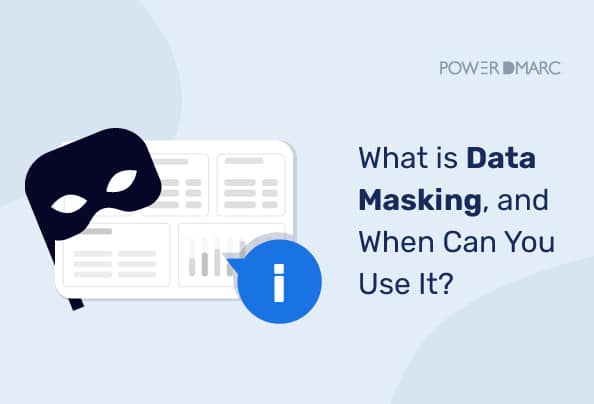“Data masking is a process of hiding confidential data from the user through various methods, while it’s still available for use by application programs and business processes.”
Each year, data breaches expose millions of people’s sensitive information, causing many businesses to lose millions. In reality, the average cost of a data breach is $4.24 million in 2021. Personally Identifiable Information (PII) is the most expensive among all compromised categories of data.
Consequently, many firms now prioritize data protection above all else. As a result, data masking has evolved into an indispensable method for many firms to protect their sensitive data.
Key Takeaways
- Data masking is essential for protecting sensitive data from unauthorized access while still being usable by applications.
- Implementing data masking during application development and testing helps safeguard original data from exposure.
- Different methods of data masking, such as dynamic, static, and on-the-fly, can be applied based on specific data protection needs.
- Data masking allows for safe information sharing with third parties without compromising the underlying sensitive data.
- Maintaining the format and structure of data through masking ensures business continuity during testing and deployment of new systems.
What is Data Masking?
Data masking is a process of masking sensitive data. It protects sensitive data by replacing it with non-sensitive or pseudo data. It can be used as a security measure to protect sensitive data against unauthorized access and unintentional modification.
Data masking can be performed at different stages of the software development lifecycle (SDLC):
- During application development – applications, whether iOS or Android applications, are developed using masked data instead of real data. This protects the original data from being exposed to developers or testers.
- During testing – test cases are executed using masked data instead of real data. This protects the original data from being exposed to testers during testing.
- After deployment – applications are deployed using masked data instead of real data. This protects the original data from being exposed to end users after deployment.
Simplify Security with PowerDMARC!
Types of Data Masking
Masking sensitive data effectively protects sensitive information while it is being processed or stored in an environment where it could be exposed to unauthorized users or applications. Data masking can be applied at multiple application lifecycle stages, including development, testing, and production environments.
Data masking can be implemented using one of the following methods:
On-the-fly: This type of Data Masking happens when an application is processing sensitive data. The application will replace the sensitive fields with random numbers, letters, or symbols before sending them out to other applications or back-end systems.
Dynamic: Dynamic Data Masking uses techniques such as encryption and tokenization to protect your sensitive data. It does this by applying one technique at a time based on how much protection you need for each piece of sensitive data.
Static: Static Data Masking uses Advanced Encryption Standard (AES) algorithm to encrypt all your sensitive data and then replace it with artificial values before sending it anywhere else in your network.
Deterministic: This method replaces actual values with random values so that no two rows have matching values once masked. The result is a complete loss of meaning for the original value but still allows for statistical analysis of the masked data set as if it were never masked.
Statical Data Obfuscation: masking sensitive data uses randomization techniques to disrupt patterns in the data without losing essential information about its semantics (e.g., its structure). Statical obfuscation does not indicate that an entry has been modified from its original state; consequently, there may be some cases where statical obfuscation cannot be used without risking the confidentiality or integrity of your data set.
Data Masking Techniques
There are many techniques available for implementing data masking, such as:
Shuffling
Shuffling involves permuting the elements within columnar data to ensure no correlation between them. For example, if the values are from 1 through 9, then shuffling would mean that the rows would be arranged in random order.
Blurring
Blurring involves hiding fields within rows by applying noise functions such as Gaussian Blur or Median Filter. This technique does not change the total number of columns or rows but does change their values. However, it does not provide significant protection against correlation attacks because noise functions are easy to reverse engineer using statistical analysis techniques like linear regression analysis.
Substitution
The sensitive data is replaced with a placeholder value (such as a sequence number) that doesn’t reveal any information about the original data. For example, credit card numbers in financial services could be masked with meaningless numbers that can’t be traced back to actual cardholders.
Tokenization
Tokenization replaces one piece of sensitive data with another that has no value in and of itself but can be recognized by an application as belonging to a particular category. For example, bank account numbers might be replaced with random tokens rather than actual account numbers.
Character Scrambling
The sensitive data is scrambled so that it cannot be reversed back into its original form.
Data Masking Examples – Where To Use!
Masking sensitive data protects against data security threats by:
Protects Against Data Security Threats
Data Masking protects against security threats by masking sensitive information, such as credit card numbers, social security numbers, and other PII (Personally Identifiable Information) that may be stored in databases or spreadsheets. This way, if a hacker or unauthorized person gets access to your database or spreadsheet, they won’t be able to see the real data. The masked data will look like garbage to them.
Allows Information Sharing
By protecting sensitive information with Data Masking, you can safely share information with third parties without worrying about them accessing the underlying data. This allows you to work more efficiently with third parties by sharing important information like customer lists and sales data while preserving privacy and confidentiality.
Preserve Format and Structure
Data masking preserves the format and structure of data so that business data can still be used for testing. This allows companies to continue using their existing applications without making changes or rewriting code, which helps avoid disruption when deploying new systems. Data masking allows companies to test real data without worrying about leaking sensitive information.
Protect Sensitive Data from Inadvertent Access
Data masking ensures that only authorized users have access to sensitive information. It prevents the accidental release of private data by removing all personal identifiers such as name, address, phone number, or social security number (SSN). It also removes other identifying information such as medical history, credit card numbers, driver’s license numbers, and passport numbers, so they are not visible when viewing masked data.
Final Words
Data masking is a vital component when it comes to protecting sensitive data. If you have a personal or business database and do not have a process that protects this data, it could be at risk of being exposed. The decision to implement it should also be a carefully studied and planned strategy.
For assistance in increasing your email’s security, implement DMARC for protection against spoofing and phishing attacks.




